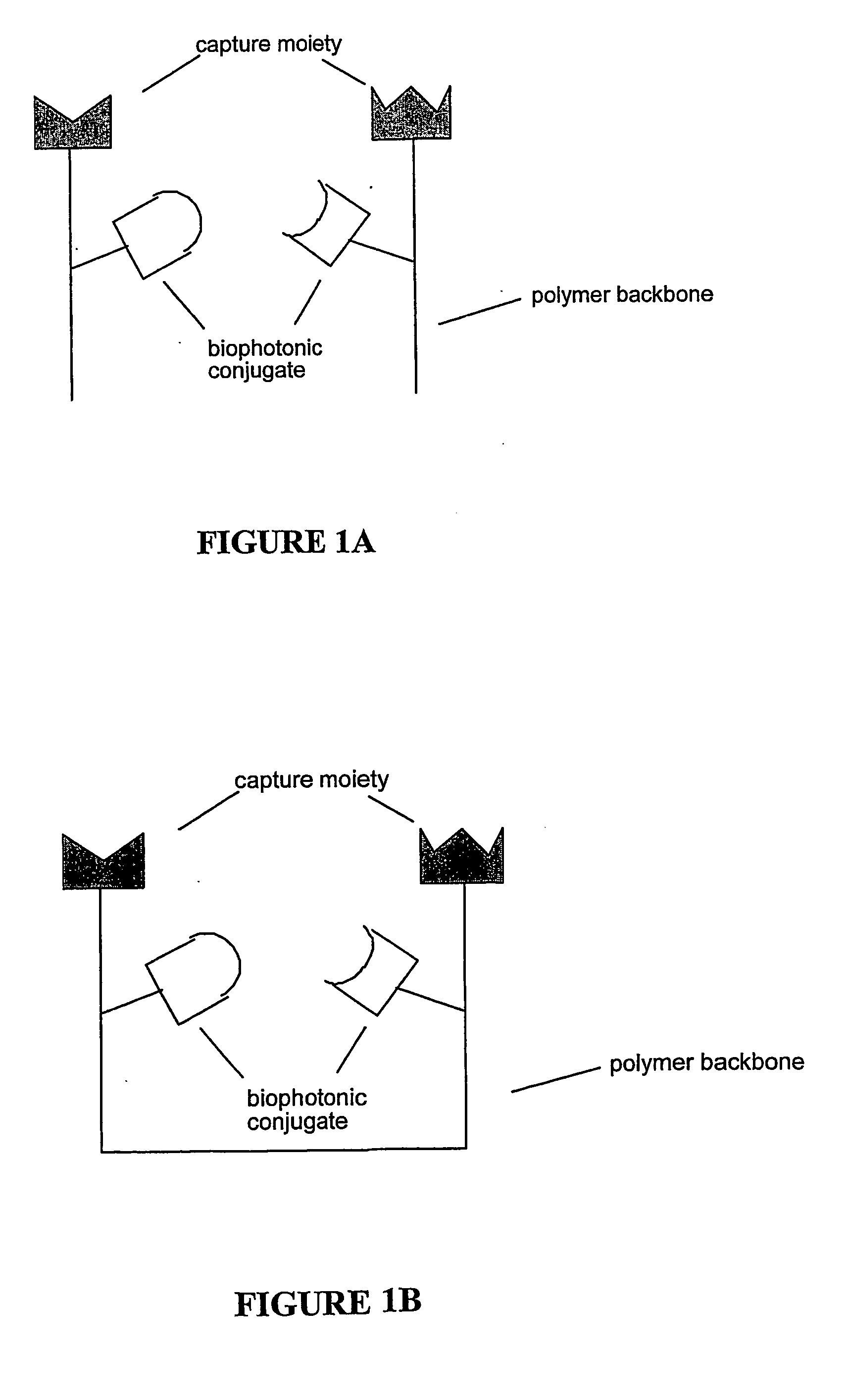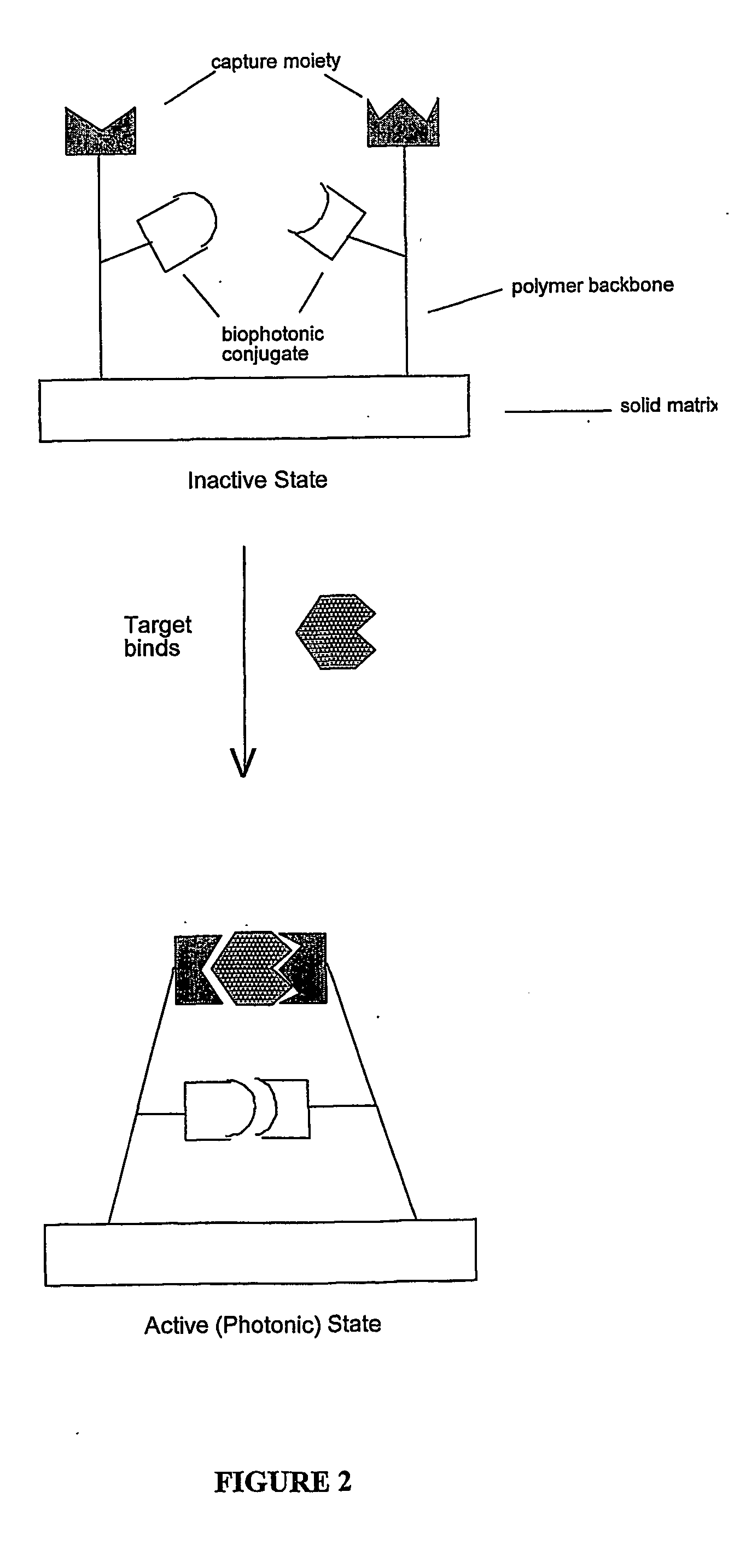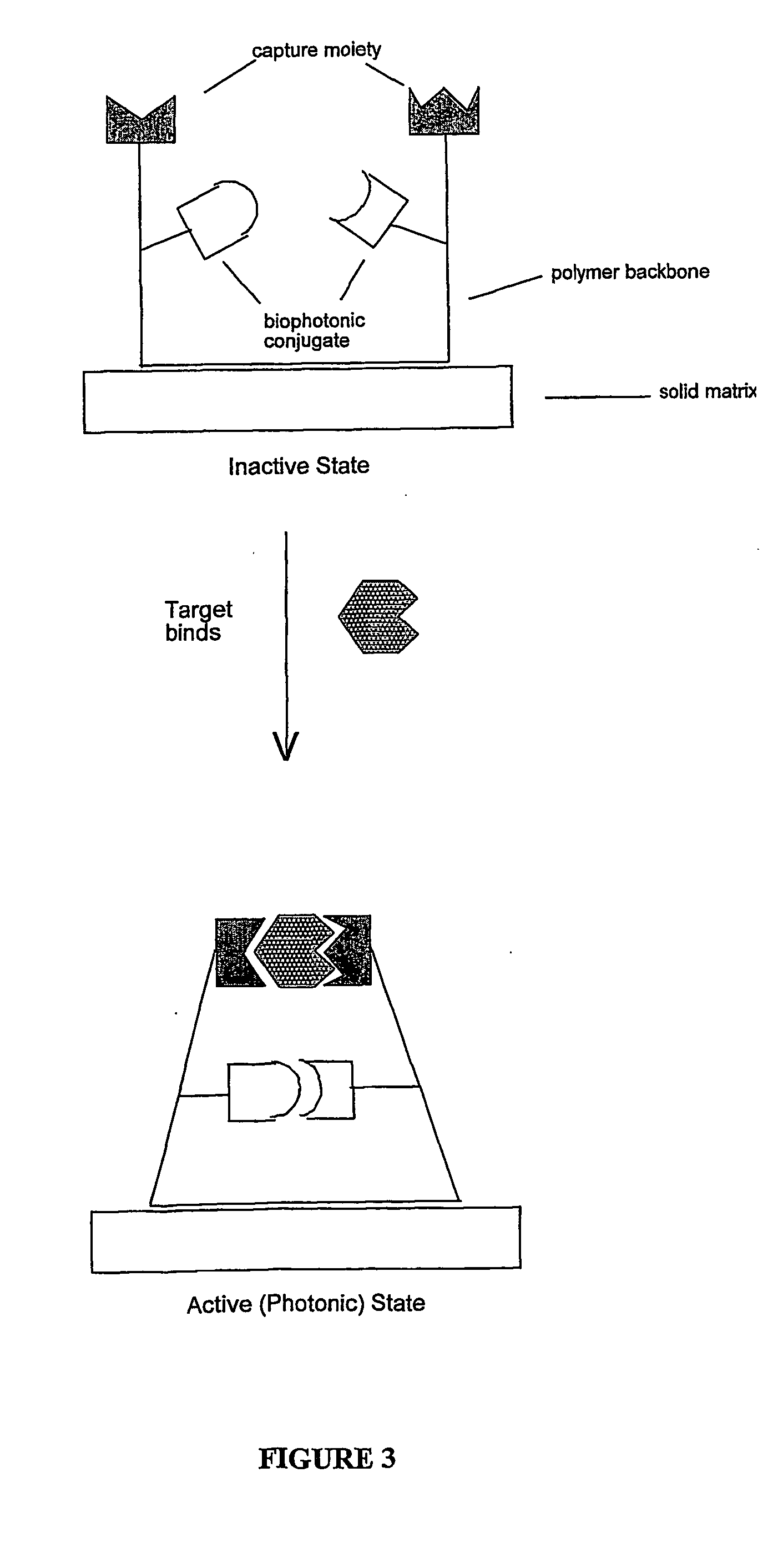Biophotonic sensors and methods of use thereof
a biophotonic and sensor technology, applied in the field of biophotonic sensors, can solve the problems of difficult translating a low-level molecular recognition event into a measurable signal, and the use of these methods for non- or minimally invasive sensing of molecular targets in vivo has been impractical, and achieves high specificity and high sensitivity for target molecules
- Summary
- Abstract
- Description
- Claims
- Application Information
AI Technical Summary
Benefits of technology
Problems solved by technology
Method used
Image
Examples
Embodiment Construction
[0015] The present invention provides novel biophotonic sensors that have molecular recognition with high sensitivity for target molecules. The biophotonic sensors of the present invention comprise at least one capture moiety which has a high specificity for molecules of interest (target molecules) and at least one biophotonic conjugate. The biophotonic conjugate exhibits a characteristic photonic activity only when a target molecule is bound. This characteristic photonic activity may include, but is not limited to, either a qualitative response or a measurable change in photonic characteristics upon interaction of the sensors with the target molecules.
[0016] In one embodiment, the capture moiety has a high affinity and specificity for a target molecule. The target molecule is any molecule of interest that can be bound by the binding components of the capture moiety. The target molecule can include individual molecules, molecular complexes or classes of molecules. Furthermore, the ...
PUM
 Login to View More
Login to View More Abstract
Description
Claims
Application Information
 Login to View More
Login to View More - R&D
- Intellectual Property
- Life Sciences
- Materials
- Tech Scout
- Unparalleled Data Quality
- Higher Quality Content
- 60% Fewer Hallucinations
Browse by: Latest US Patents, China's latest patents, Technical Efficacy Thesaurus, Application Domain, Technology Topic, Popular Technical Reports.
© 2025 PatSnap. All rights reserved.Legal|Privacy policy|Modern Slavery Act Transparency Statement|Sitemap|About US| Contact US: help@patsnap.com



